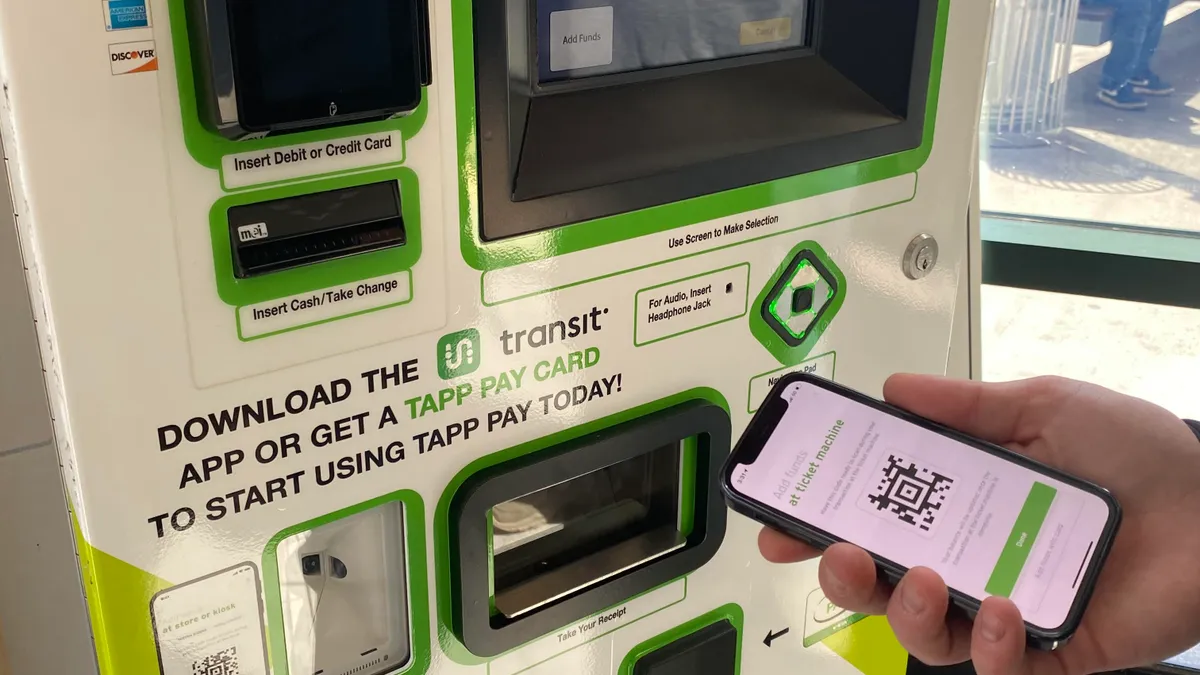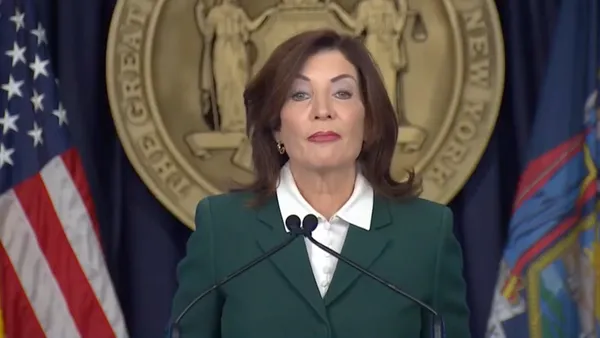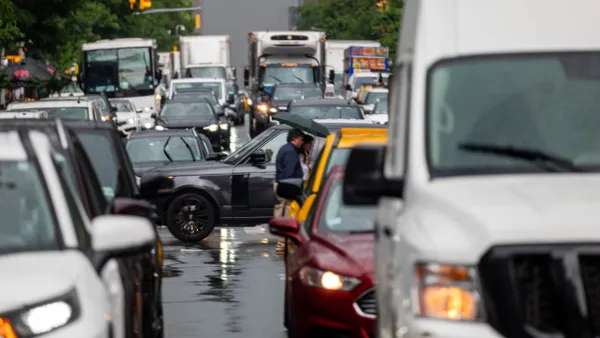Dive Brief:
-
The Greater Dayton Regional Transit Authority (RTA) in Ohio and app-developer Transit said in a press release that riders can purchase reusable smartcards to tap and ride without needing to buy a ticket, or select a fare before traveling. The payment platform is being rolled out in partnership with Masabi, a provider of mobile ticketing technology for public transport.
-
Apps from Transit and the regional transit EZfare consortium serve 13 transit agencies across Ohio, Michigan, and Kentucky, allowing riders to purchase tickets through their phone and access real-time trip planning.
-
Other cities like New York, Washington D.C., Chicago, and Los Angeles have also rolled out tap-to-pay functionality for their transit systems to provide quicker, easier, and safer payment methods for riders and commuters.
Dive Insight:
The Greater Dayton Regional Transit Authority (RTA) and Montreal-based Transit said in the release last week that they added account-based ticketing (ABT) to the RTA’s Tapp Pay contactless fare payment platform.
The payment system powered by Masabi uses "fare-capping" technology that charges riders according to their trips. Customers' fares will be capped once they have ridden enough to accumulate the equivalent of a daily or 31-day monthly pass. Customers are capped at $3 daily and $30 within a rolling 31-day period by using Tapp Pay.
The tap-to-pay and mobile ticketing services will enable riders to pay fares quickly because they can manage their funds through their phone app, and safely because the technology enables a tap-to-pay payment channel, Masabi CEO Brian Zanghi said in an interview.
“The pandemic has accelerated agency adoption of new fare payments technologies, in particular contactless – which offers huge benefits to agencies and riders alike,” Zanghi said in a press release. “Transit agencies must also maintain accessibility to all riders, regardless of whether they own a smart device or prefer to pay with cash.”
Riders can also use the smartcard to load cash into their account by visiting a retail outlet with access to a platform operated by InComm Payments. Retailers can scan a barcode on riders’ Tapp Pay card or Tapp Pay QR code in the Transit app to load cash into their account.
Contactless payments have seen a jump in usage since the start of the pandemic. According to a new National Retail Federation and Forrester survey, 67% of retailer respondents accept some form of no-touch payment. The survey found that 58% accept contactless cards, an increase from 40% last year.
Public transit ridership dropped by nearly 80% in April 2020 though, according to a recent study, and remained more than 60% below 2019 levels through the rest of the year. Public health and safety concerns due to the pandemic have dramatically reduced overall travel and led to historic declines in public transit ridership, the study stated.
The Transit app and EZfare mobile ticketing service have seen over 500,000 trips occur on their platform since 2019, Transit and the consortium said in a press release this week. Customers can purchase and activate their tickets through the EZfare or Transit apps that provide mobility-as-a-service to riders. Of all EZfare sales, nearly 60% come from MaaS apps, and more than 55% happen on the Transit app, the release said.
Major cities like Washington D.C., Los Angeles, Chicago and New York City are exploring methods to streamline transit payments for consumers.
NYC announced in December that it had completed the rollout of tap-to-pay scanners at all subway stations and on all of its buses throughout the city. The Metropolitan Transportation Authority has been installing its contactless payment system since 2019 to phase out Metrocards that have been in use since the 90s. Customers can use their phone or a contactless payment compatible card to ride the transit to speed up payments and reduce costs throughout the transit system.
Washington D.C., Los Angeles, Chicago recently partnered with Cubic Transportation Systems’ mobile contactless-payment application. Customers can use the transit payment app to create an account and a digital card with which they can transact digitally or through tap-to-pay at transit terminals.
Card network company Visa also has been eyeing the contactless transit payment network. In its Q1 2020 call, CEO Alfred Kelly said that Visa has reached a point where a third of card-present transactions that run on the Visa network is tap versus a quarter of transactions a year ago.
“Transit continues to be a key use case and an important way to habituate tapping behavior,” Kelly said during the earnings call.
The technology does present barriers though that should be considered, including how to ensure unbanked and underbanked transit users are able access the payment options. To address those concerns, Visa offers solutions like pre-purchased products for those individuals "to enter the financial services little by little," Ana Reiley, global head of delivery in urban mobility at Visa, told Smart Cities Dive in an earlier interview.












